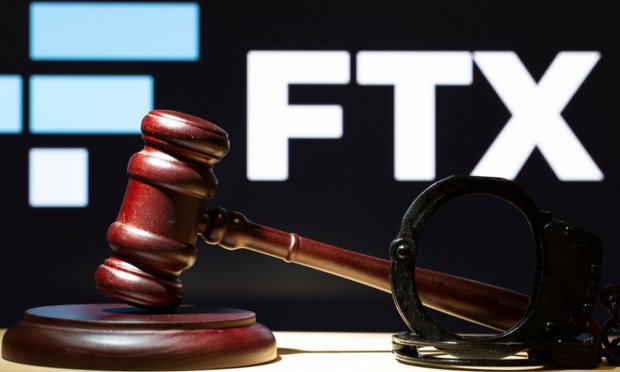
House of cards, web of lies, and now “pyramid of deceit.”
Those are all terms used to describe Sam Bankman-Fried’s multibillion-dollar FTX crypto empire, the latest descriptor coming Wednesday (Nov. 1) during the federal prosecution’s closing arguments in Bankman-Fried’s fraud trial.
The 31-year-old disgraced crypto entrepreneur has been charged with seven counts in four categories: fraud on FTX customers, fraud on FTX’s investors; fraud on Alameda’s lenders, and conspiracy to commit money laundering.
It hasn’t been the best week for the one-time billionaire turned public enemy. But it hasn’t been a great year, either, for the millions of customers his crypto exchange allegedly defrauded by misappropriating and then spending billions of their funds.
“Almost a year ago, people started to withdraw from FTX. Thousands tried to withdraw their nest eggs. But they were not processed. FTX was bankrupt. As the dust settled, a question of questions emerged. Where did the money go? Who was responsible? The answer? This man, Samuel Bankman-Fried,” said a federal prosecutor to the jury on Wednesday.
Bankman-Fried’s parents, usually in attendance at their son’s trial, were notably absent from the courtroom Wednesday during the prosecution’s argument, although they returned when the defense closed.
“[Bankman-Fried] spent his customers’ money and lied about it. This was a pyramid of deceit, all to get money. Eventually it collapsed, leaving countless victims in its wake,” the prosecution said.
The U.S. government’s closing arguments in their case against Bankman-Fried worked to paint the matter at hand as a simple one of fraud, and not a complex crypto trading morass.
“Ten billion dollars was missing. Here’s the thing. This is not about complicated issues of cryptocurrency. It’s about lies and stealing and greed,” explained the government’s legal team. “The core dispute here is whether the defendant knew that taking the money was wrong. He knew. He did it anyway. He thought he was smarter and could walk his way out of it. Today, with you, that ends.”
Read also: Of Alameda and Amnesia: Sam Bankman-Fried’s Final Day of Testimony
The federal judge overseeing the case, one of the greatest alleged financial frauds in American history, let the jurors know at the start that the closing arguments may end up running late.
“You could get dinner on the government if you stayed. I don’t vouch for the quality, but … we might be able to pay for car services,” Judge Lewis Kaplan said.
At the heart of the prosecution’s argument is that Bankman-Fried used his crypto firms as a personal piggy bank, an allegation corroborated by a forensic accountant witness they called to the stand.
“He took the money and played roulette with it. He was stealing,” the prosecution told the jury, highlighting the luxury apartments Bankman-Fried bought for himself and his parents that “all came from customer money.”
A dozen and a half witnesses, 18 total, testified during the criminal trial, which ran for 12 full days in court.
Seven former FTX and Alameda Research employees were called to the witness stand, all on the government’s behalf. Three were key witnesses and former members of Bankman-Fried’s inner circle: Caroline Ellison, Nishad Singh and Gary Wang. Each pleaded guilty to federal charges.
See more: Sam Bankman-Fried, FTX and the Demise of the Cool Kids
“Adam Yedidia quit. Can Sun resigned. The defendant’s partners in crimes said the same thing. … If you believe even one of the three cooperators, the defendant is guilty,” said the prosecution, noting that “over 140 times” Bankman-Fried hemmed and hawed and refused to directly answer questions during his testimony.
“He tried to tell a story to exclude himself from the fraud. That was a lie. Over three days he took the stand and he lied. You’d have to ignore all the evidence. … You’d have to believe that the defendant, from MIT, was clueless,” the prosecution added.
The prosecution ended its arguments by pointing again to the impact Bankman-Fried’s actions had on everyday individuals.
“Everyday people lost savings, all because of this defendant’s fraud. Because he wanted more money. … He wanted to use the money. He did use the money. He had the arrogance to think he’d get away with it. … Let the evidence prevail over his storytelling. He lied. He is guilty. Reach that verdict: that he is guilty,” the government’s lawyer said, emphasizing that Bankman-Fried’s claims that “he just got unlucky” don’t work in this case. “Nor does calling it margin lending.”
The defense’s closing arguments would end up wrapping hours after 4:30.
“You all have done a great job listening to complicated issues like margin loans,” Bankman-Fried’s defense lawyer said to start off the closing arguments, going on to attempt to cast doubt on the testimony of the government’s witnesses due to the cooperation agreements they signed.
“They didn’t think they were doing anything wrong. Then in November, as chaos grows, blame shifts to Sam,” the defense said.
“The government has tried to turn Sam into some sort of monster. It’s wrong and unfair. And it’s not a basis on which to decide this case,” the defense added. “There’s a book in which the character was asked, ‘How did you go bankrupt?’ And he replied, ‘Gradually, and then suddenly.’ And that’s what happened here. Please keep this in mind. That people suffered losses is not the question.”
But according to the government, they didn’t suffer losses. Their money was allegedly misappropriated, and it’s where those funds went and how, where the question lies.
“Tomorrow, rebuttal and charge. If we stay late, it’s pizza,” said Judge Kaplan to close the hearing.